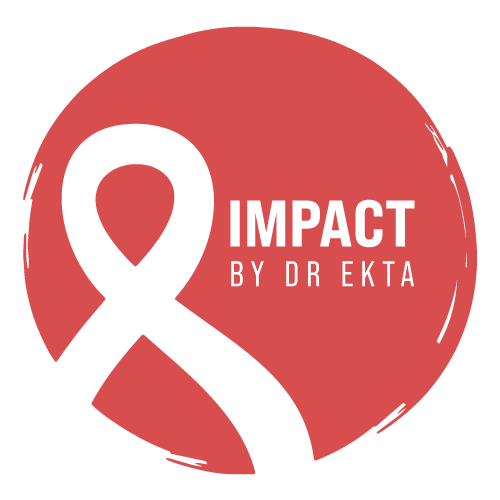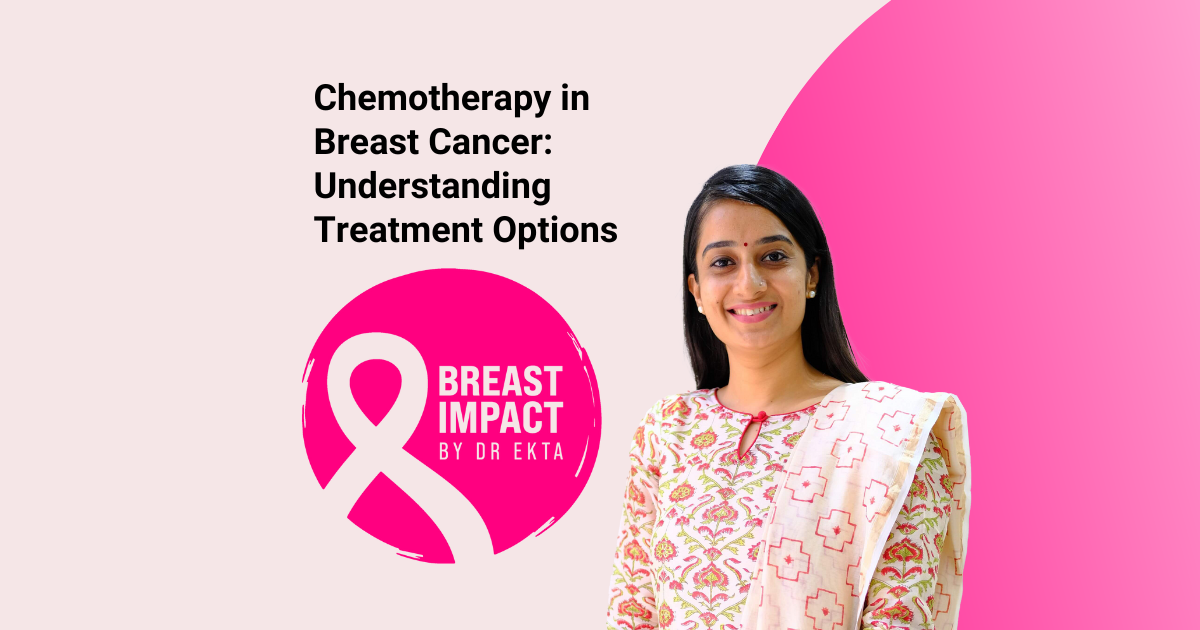I have guided many women through the complex journey of chemotherapy in breast cancer. The word “chemotherapy” can be overwhelming, often associated with fear and uncertainty. However, understanding its role in breast cancer treatment can help patients make informed decisions with confidence.
Chemotherapy is a powerful tool in the fight against breast cancer, but it is not a one-size-fits-all approach. The treatment plan is carefully tailored based on factors such as cancer stage, tumor characteristics, and a patient’s overall health. In this blog, I want to provide a detailed insight into chemotherapy in breast cancer, its importance, treatment options, and what patients can expect during the process.
What is Chemotherapy?
Chemotherapy is a type of systemic treatment that uses drugs to destroy cancer cells. Unlike surgery or radiation, which target specific areas, chemotherapy in breast cancer works throughout the body, making it particularly effective in cases where cancer has spread beyond the breast.
The goal of chemotherapy in breast cancer can vary:
- Neoadjuvant chemotherapy – Given before surgery to shrink large tumors and improve surgical outcomes.
- Adjuvant chemotherapy – Administered after surgery to eliminate any remaining cancer cells and reduce recurrence risk.
- Metastatic chemotherapy – Used for advanced breast cancer to slow the progression of the disease and improve quality of life.
Who Needs Chemotherapy?
Not every patient diagnosed with breast cancer requires chemotherapy. It depends on multiple factors, including:
- Tumor size and grade
- Lymph node involvement
- Hormone receptor status (ER, PR, HER2)
- Genetic markers and risk of recurrence
For some patients, targeted therapy or hormone therapy may be more appropriate. A thorough evaluation helps determine the best course of action.
Types of Chemotherapy Drugs Used in Breast Cancer
Chemotherapy drugs work by interfering with cancer cell growth and division. The most common types used in chemotherapy in breast cancer include:
- Anthracyclines (e.g., Doxorubicin, Epirubicin)
- Effective against aggressive cancers but may have cardiac side effects.
- Taxanes (e.g., Paclitaxel, Docetaxel)
- Help prevent cancer cells from dividing and spreading.
- Alkylating Agents (e.g., Cyclophosphamide)
- Work by damaging cancer cell DNA to prevent replication.
- Antimetabolites (e.g., 5-Fluorouracil, Capecitabine)
- Block cell metabolism needed for growth and division.
The combination of drugs is chosen based on the patient’s cancer type and treatment goals.
How is Chemotherapy Administered?
Chemotherapy can be delivered in different ways depending on the patient’s needs:
- Intravenous (IV) Infusion – The most common method, given in cycles at a hospital or clinic.
- Oral Chemotherapy – Pills that patients can take at home.
- Injection – Directly administered into the bloodstream or muscle.
The treatment schedule varies, often spanning several months, with breaks in between cycles to allow the body to recover.
Managing Side Effects of Chemotherapy
One of the biggest concerns patients have about chemotherapy in breast cancer is its side effects. While it is true that chemotherapy affects both cancerous and healthy cells, advancements in medicine have significantly improved side effect management.
Common side effects include:
- Fatigue: One of the most common effects but can be managed with proper rest and nutrition.
- Nausea and Vomiting: Anti-nausea medications help control these symptoms.
- Hair Loss: A temporary side effect; hair regrowth occurs after treatment ends.
- Immune System Suppression: Increased risk of infections; patients should take precautions.
- Neuropathy: Tingling or numbness in hands and feet due to nerve damage.
Each patient responds differently to chemotherapy, and supportive care plays a crucial role in improving tolerance to treatment.
Lifestyle Adjustments During Chemotherapy
Patients undergoing chemotherapy in breast cancer often need to make lifestyle adjustments to maintain their well-being:
- Balanced Nutrition: Eating nutrient-rich foods supports the immune system.
- Physical Activity: Gentle exercise can help with fatigue and overall energy levels.
- Emotional Support: Joining support groups or seeking counseling can ease emotional distress.
- Adequate Hydration: Staying hydrated helps flush toxins from the body.
What Happens After Chemotherapy?
Once chemotherapy is completed, patients undergo follow-up assessments to evaluate treatment success. Tests such as mammograms, MRIs, or PET scans help determine if the cancer has responded well.
Some patients may require additional treatments like hormone therapy, targeted therapy, or radiation therapy, depending on their individual case.
Final Thoughts: Empowering Patients with Knowledge
As an oncologist, I understand that the journey through chemotherapy in breast cancer is challenging, but knowledge is power. Understanding the different treatment options, potential side effects, and ways to cope with chemotherapy can help patients feel more in control of their health.
Every patient’s treatment journey is unique, and open communication with the medical team is essential for personalized care. If you or a loved one is facing chemotherapy in breast cancer, remember that support is available, and advancements in treatment continue to improve outcomes every day.
Stay informed, stay strong, and never hesitate to ask questions about your treatment. You are not alone in this fight.

